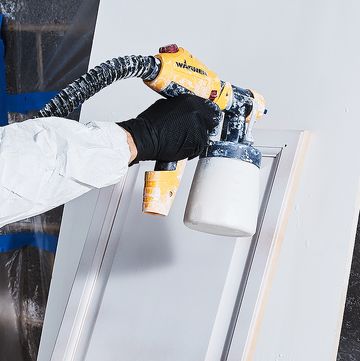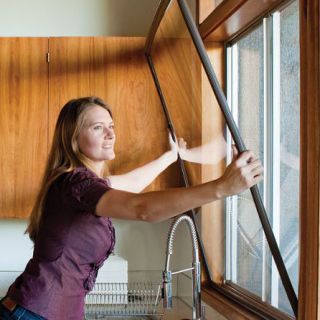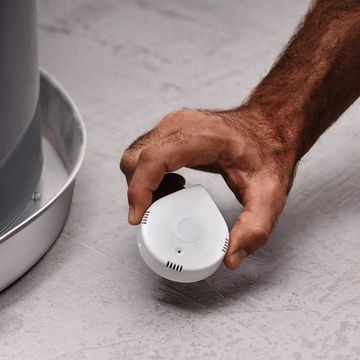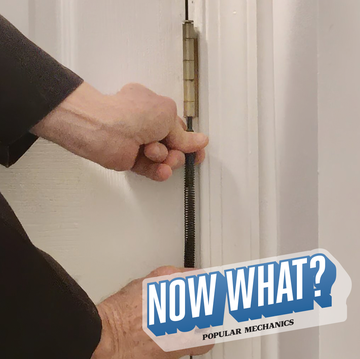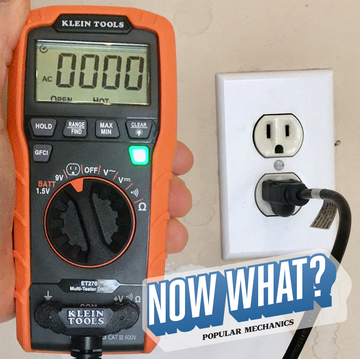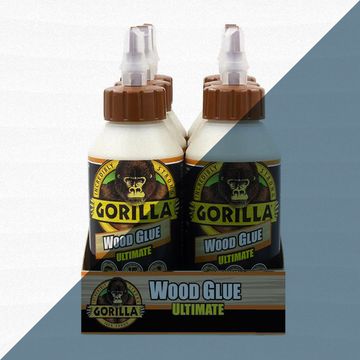Save time and money on costly future home repairs, by performing a DIY home inspection. Once you know the trouble spots to look out for, you can easily examine your home throughout the year.
We've provided a helpful home inspection checklist that you can refer to as often as needed. It's helpful to take notes of issues and repairs and make sure it's dated. This log will serve as a great reference point as long as you live in your home.
The Inspection Checklist
What to Bring:
1. Print: This checklist
2. Wear: Gloves
3. Carry: Flashlight, flathead and Phillips-head screwdrivers
Where to Look:
1. The Attic
2. Living Spaces
3. The Basement
What to Look For:
1. Rotted Wood: Probe joist ends and sill plates with a screwdriver or an ice pick. Soft spots may indicate wet or dry rot, especially if the floor above sags. Look for bubbling or rippled paint and check behind siding for rotting wood. Rotted wood should be repaired immediately.
2. Holey Joists: Poorly placed drill holes or notches for wire, pipe or duct can sap a floor joist's strength. What's safe varies by manufacturer, but here are some rules of thumb: No holes or notches in the top or bottom flanges of an I-joist. Even big holes could be okay in the center, but not the ends, of the framing. Drilled holes must be at least 2 in. from top or bottom and no greater than one-third the depth of an I-joist. Notches in a conventional lumber joist should not exceed one-sixth of its depth or penetrate the center third of the joist span.
3. Termite Tubes: Pencil-thick tubes snaking along joists may mean trouble. Break the tubes. If termites spill out or the tube is repaired in a few days, call an exterminator.
4. Heater Noise: "If you hear your water heater gurgle, pop or snap, it's time to drain out sediment," Rick Yerger says. "Flushing 3 to 4 gal. prolongs the life of the heater."
5. Shoddy Splices: Spliced wiring outside electric boxes is a sure sign that an unskilled electrician has been at work—and a good reason to check out the rest of the home's wiring. "If I find sloppy work in such a visible place," says home inspector Karl Champley, "then what does that say about wiring hidden in the walls?"
6. Foundation Cracks: Hairline cracks in a block or poured concrete foundation are nothing to panic about. But watch for cracks that are both horizontal and vertical, or ones that are growing. Keep track of how wide they are--if they get bigger, call in a pro.
Be Sure To:
Poke through enough dank crawlspaces and dusty attics, and you gain an encyclopedic store of cautionary tales about ill-conceived DIY plans, bad workmanship and deferred maintenance. Tim Hockenberry, a home inspector on HGTV's House Detective and the DIY Network's Finders Fixers series, has examined some 6,000 homes in the Washington, D.C., area. Until he showed up at a condo in suburban Virginia, he figured he'd seen it all.
Nothing looked out of the ordinary until Hockenberry opened the hatch to the attic. "The guy had cut all of the webbing from the wooden roof trusses and built himself a workshop in the space he'd created. All that was holding up the roof was a 2 x 4 running the length of the unit," he says. "One snowfall and it could have collapsed."
Check out more home inspection nightmares.
Not every home holds such dangerous secrets—yet more homeowners than ever could be facing unseen trouble. Last year about 1.4 million homes in the U.S. were sold without an inspection. As recently as 2005, when the real-estate boom was in full swing, buyers routinely sweetened their bids in hot markets by consenting to the removal of termite and house inspection clauses. "Right about now, those folks may be discovering some truths about their homes and dreading what awaits when it's time to sell," Hockenberry says.
Clearly, hiring an inspector before buying a home is a good idea. But you don't need to go house shopping to benefit from the sleuthing know-how of Hockenberry and his peers. PM consulted the pros to compile a do-it-yourself guide for spotting trouble early. An afternoon spent with a clipboard and a flashlight—followed by a few hours setting things right with caulk, shingles, and a drill—can save big headaches down the road.
Home inspector Frank Lesh still shakes his head over a discovery he made in one Chicago-area attic. "The owner had rigged a plastic chute into a tub to which he'd hooked an electric pump. When the roof leaked, the tub filled, the pump kicked on and the water went through a hose and discharged out a hole this guy had drilled in the soffit," he says. "The pump alone probably cost $125, when all he needed was a few dollars' worth of flashing on the roof."
You'd never do something like that (right?). But subtler problems can develop over time, in the form of hidden leaks, stealthy insects and gradual decay. "I make more write-ups for lack of basic maintenance than anything else," says Rick Yerger, the co-host of Finders Fixers, who inspects homes in Dana Point, Calif. "Stuff like failed caulking, water intruding from outside, rusted sink traps, peeling paint, leaking roofs."
Yet owners of new houses aren't off the hook, according to Wally Conway, owner of HomePro Inspections in Jacksonville, Fla. "A new house built with a faux stone veneer is going to be more susceptible to damage from water and bugs than an old house built with materials like real stone and heart pine," he says.
It's all fixable. And it's easy to get started. The process begins with a knowing eye—and a sharp pencil.




